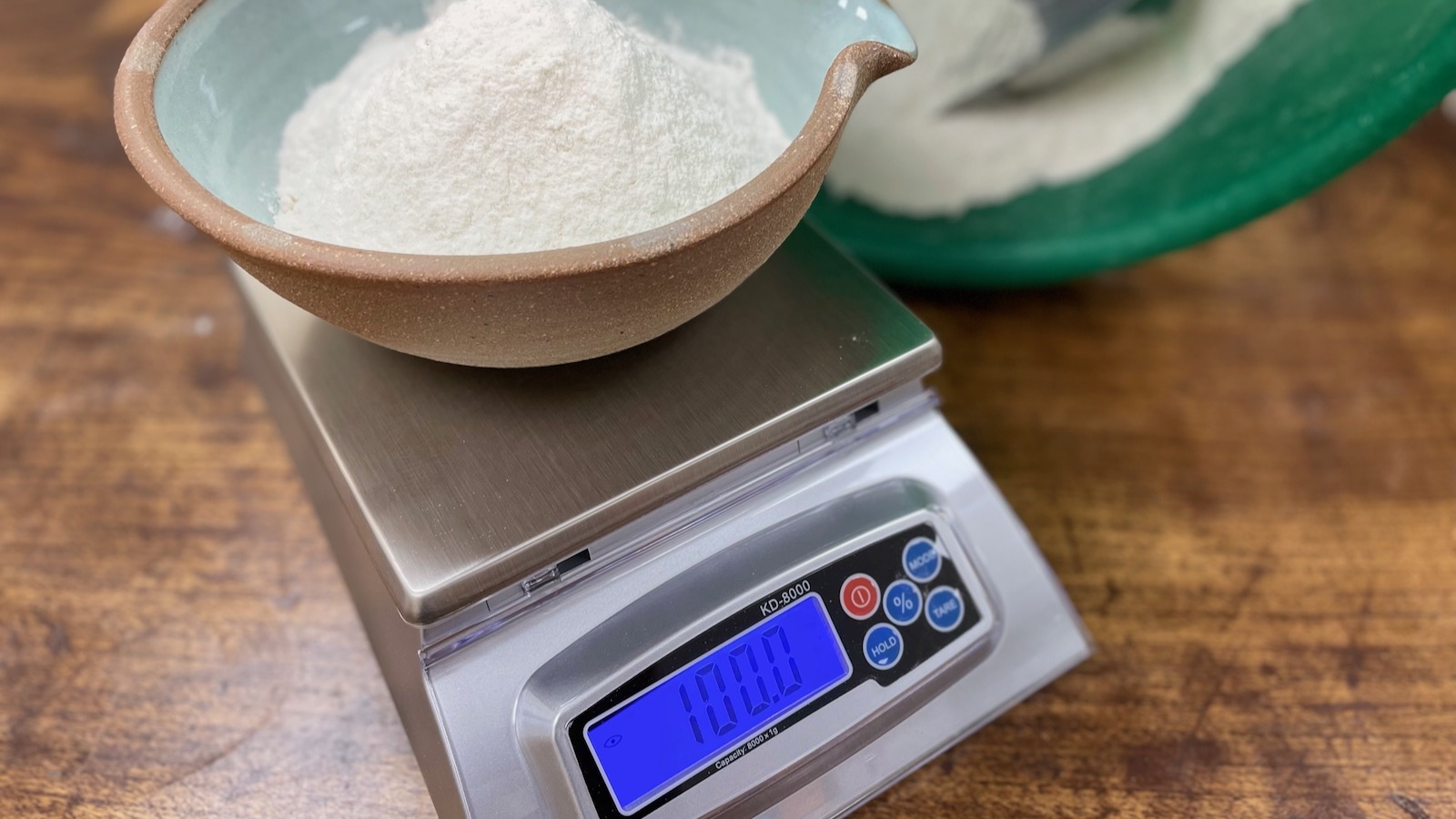We're all familiar with recipes that specify flour, water, starter etc in grams, ounces, cups or spoons. But what if you want to make the recipe a little - or a lot - larger? Doubling a recipe using mental arithmetic is usually easy enough, but can still lead to annoying mistakes (at least, in my experience!). However, increasing the original recipe by a more complicated amount, such as 3.75 times larger, is much more prone to error.
Bakers sometimes use a system which is proportionate, called Bakers' Percentages, with the weight of each of the other ingredients in a recipe expressed as a percentage of the total weight of the flour, as this provides a way to scale a recipe - and thus the bakery's production - up or down. The weight of flour in the recipe is the cornerstone of the method, and is always expressed as 100%. Thus, a very basic bread recipe for four small loaves might read:
1kg white flour (100%)
650g water (65%)
400g sourdough starter (40%)
20g salt (2%)
The first thing to note is that the other amounts don't add up to 100%, because each ingredient is calculated independently, depending on how much is used in relationship solely to the flour. We're not trying to add them all up, to make a magic number! In some books, the author will have included percentages; otherwise, if you think you'll find this system useful, you'll need to calculate them yourself, and write them into the recipe - use our Dough Calculator.
Using the percentages shown above, the recipe can be adjusted to any size, depending on how much flour you are using. Also, looking at a recipe as a formula based on percentages may help you to get a handle on the nature of the recipe, since it helps you to see the proportion of water to flour (that is, the level of hydration), and thus the likely stiffness of the dough and therefore the sort of bread that you are making.
How to use it in practice
If you find all this a little daunting, and think that you might just need a little support along the way, the MyWeigh KD8000 is a kitchen scale that has a baker's percentage function built in. It's easy to use with very little practice: all you need to do is follow these straightforward steps:
- Place an empty measuring bowl on the scale and zero the weight by pressing "Tare"
- Start by weighing the amount of flour that you want to use, then press the "%" button to set this weight as 100%.
- Tip the flour from the measuring bowl into your mixing bowl, and return the measuring bowl to the scale. It will read 0% in readiness for the next ingredient.
- Add the next ingredient. The "%" shown will rise as you add more, until you reach the desired %.
- Tip the measured amount into your mixing bowl and repeat for each additional ingredient. Once finished, press 'Tare' to clear, or turn the scales off.
That is all there is to it. Starting with a formula that gives a known number of loaves or quantity of dough, this method allows you to increase or decrease the recipe with ease and accuracy.










